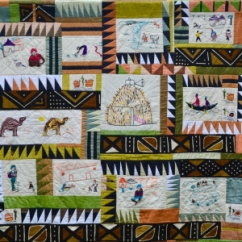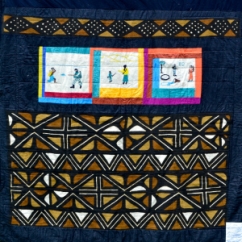Visit Sister Artists, our partnership between Malian and American art quilters (2020)
Download our final report on the 2013-2017 program (2018)
Visit Sister Artists, our partnership between Malian and American art quilters (2020)
Download our final report on the 2013-2017 program (2018)
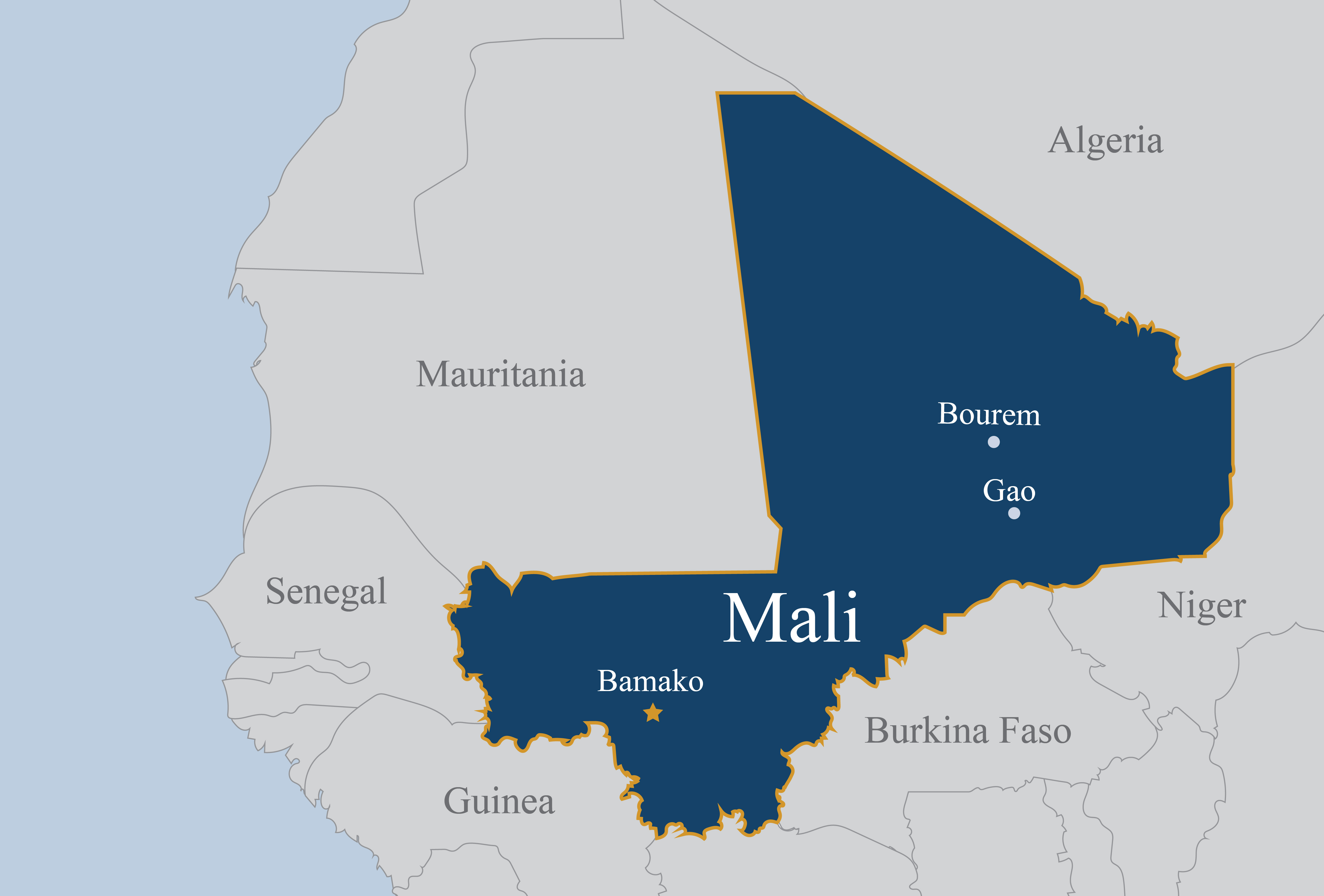
This program was launched in 2014 to build a supportive community for women who had suffered from sexual and gender-based violence (GBV) during and since the 2012 conflict in northern Mali. Our goal was to help survivors recover their confidence and rejoin society. By investing in women, we also hoped to offer an alternative vision to the violence of 2012 and help prevent a recurrence of conflict.
The need was certainly great. Thousands of Malian women were raped, flogged or forced into marriage the during the crisis in 2012 and many remain traumatized. New cases of GBV spiked in 2017 as the conflict spread to central Mali, causing more displacement, food shortages, and insecurity.
The program ran between 2014 and 2017. It was managed in Mali by Sini Sanuman, a leading advocate for women’s rights and worked as follows: First, Sini Sanuman animators reached out to women in the community through animation sessions so as to identify survivors who needed special help. Those selected were invited to spend six months at one of 4 centers in Bourem, Bamako, and Gao where they received emergency support and were trained to make soap, clothes, and embroidery. The trainees sold whatever they produce, which is good for their wallet and confidence.
The program produced impressive results. Between June 2014 and December 2017, Sini Sanuman supported 645 GBV survivors; directly benefited another 2,212 women and students; and reached another 53,000 vulnerable women through animations. We invite you to meet some of them below.
The program was generously funded by the German Federal Foreign Office through Zivik/IFA in Berlin, by the Foreign Ministry of Liechtestein, and by the individual donors who are listed below. We are deeply grateful to them all The women who were interviewed for these pages are not identified by their real names. Those who are pictured gave permission for their photos to be used. (January 2018)
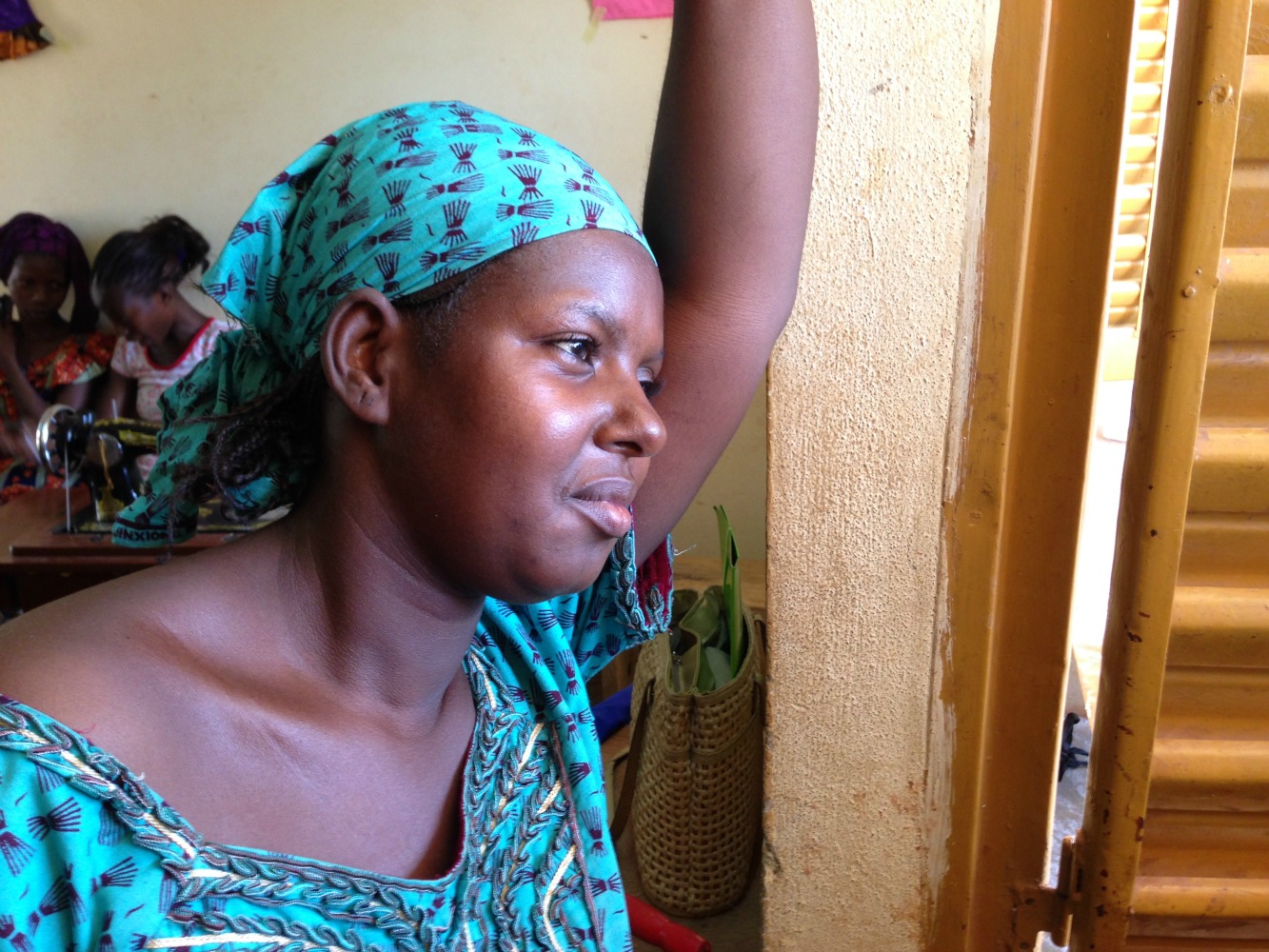
Brutal past, uncertain future: thousands of women were raped, forced into marriage and publicly abused by rebels and jihadists in 2012.
This campaign was a response to the extraordinary abuse suffered by women in northern Mali in 2012 after Tuareg rebels rose in rebellion. The rebels were joined by Islamic fighters, many of whom had opposed the regime of Ghadaffi in Libya. Together they imposed a harsh regime. Thousands of women were raped, flogged, forced into marriage, or saw their husbands killed in front of them. Most fled south to the capital Bamako, destitute and traumatized.
In December 2012, French forces expelled Islamists from populated areas in the north and on July 1, 2013, the UN began deploying a large peacekeeping force (MINUSMA) to Mali. Malians went to the polls on July 28, 2013, and elected President Ibrahim Boubacar Keita. Peace talks began in Algiers on July 16, 2014, between the Malian government and rebel armed groups and an agreement was signed in June 2015.
In spite of this, security worsened in the north and the center of Mali. Attacks against UN peacekeepers escalated, and travel to the north by internationals was curtailed.
This placed the burden of building peace squarely on Malian civil society and organizations like Sini Sanuman. Sini Sanuman (“Healthy Tomorrow”) was set up in 2002 by Siakao Traore to coordinate a Malian campaign against excision/Female Genital Mutilation. UNICEF began partnering with Sini Sanuman in 2007. Sini Sanuman’s work on excision meant that the group was well placed to respond to the 2012 crisis. With funding from UNICEF, Sini Sanuman referred 221 women for medical services in Bamako between 2012 and 2013.
In 2013, the office of the UN Special Representative on Armed Sexual Violence, Mme Zeinab Bangora, referred Sini Sanuman to The Advocacy Project. At the time AP was supporting SOS Femmes en Danger in the eastern Congo and we felt the same approach could be effective in Mali. Sini Sanuman and AP met in Bamako, visited refugees who had recently arrived from the north, and submitted a proposal to Zivik/IFA in Berlin. The program described on these pages was launched in June 2014.
AP deployed three talented Peace Fellows to support the campaign. Giorgia Nicatore worked at Sini Sanuman from June to December in 2014. She was succeeded in 2015 by Refilwe Moahi, a national from Botswana and graduate of Brandeis University. In 2016, Rose Twagirumukiza, a survivor of the Rwandan genocide studying at Georgetown University, spent 10 weeks at Sini Sanuman working on the soap project. All three wrote blogs about their experience.
AP’s Executive Director, Iain Guest, made several extended visits to Mali between 2013 and 2018. AP promoted the program in the US by exhibiting the Alafia Mali (Peace in Mali) quilts and through our website, media outreach, and events.
This project was funded by IFA (Institut für Auslandsbeziehungen) in Berlin, with resources provided by the German Federal Foreign Office, by the Government of Liechtenstein, and by individual donors. We were particularly grateful to Valentin Wasilew, our Zivik/IFA program officer, who visited Mali in September 2015.
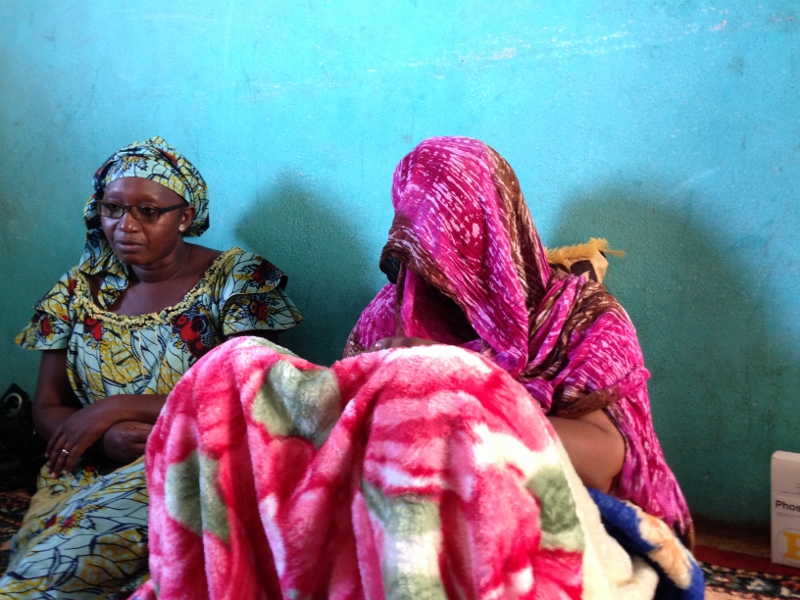
Fatima, right, was the first victim of rape in the north who met with AP in 2013. Animata Sissoko, left, is an animator from Sini Sanuman.
Fatima, shown in this photo, covered her face and sobbed as she recalled how she had been raped by Tuareg rebels in the northern town of Gao during the 2012 crisis. The act, as she described it, was brutal. When the rebels came to her house she told them she was menstruating and begged them to leave her alone. They laughed and took turns to rape her in front of her children. By this time her husband had disappeared and was presumed dead. Fatima had no money and no extended family to help her. She just knew she had to leave.
Fatima was the first victim of war rape in Mali who met with AP in 2013, and her story was sadly typical. The year-long “occupation” of the north by Tuareg rebels and Islamists was particularly harsh on women. Women were publicly beaten for not wearing a veil, for smoking, for riding a motorcycle, or for bathing in the river. Hundreds were raped in public or in front of their families and husbands. Thousands were driven from their homes after losing animals and crops.
Forced marriage served as a cover for rape. One of the early beneficiaries from Sini Sanuman’s program, a 14-year-old girl, was “married” to nine Islamic fighters at the same time. (The fighters paid a dowry of 4.5 million CFA to her father in a perverse attempt to justify the act.) Another woman remembered how Islamists had broken into the family store and beat her husband. She brought her paralyzed husband and six children to Bamako and was now supporting the entire family by recycling plastic bags.
The memories of these traumatic events have remained vivid and they are reflected in the graphic images of the Alafia Mali quilts. Survivors continued to arrive at Sini Sanuman’s centers, deeply traumatized and in need of emergency care, well into 2018.
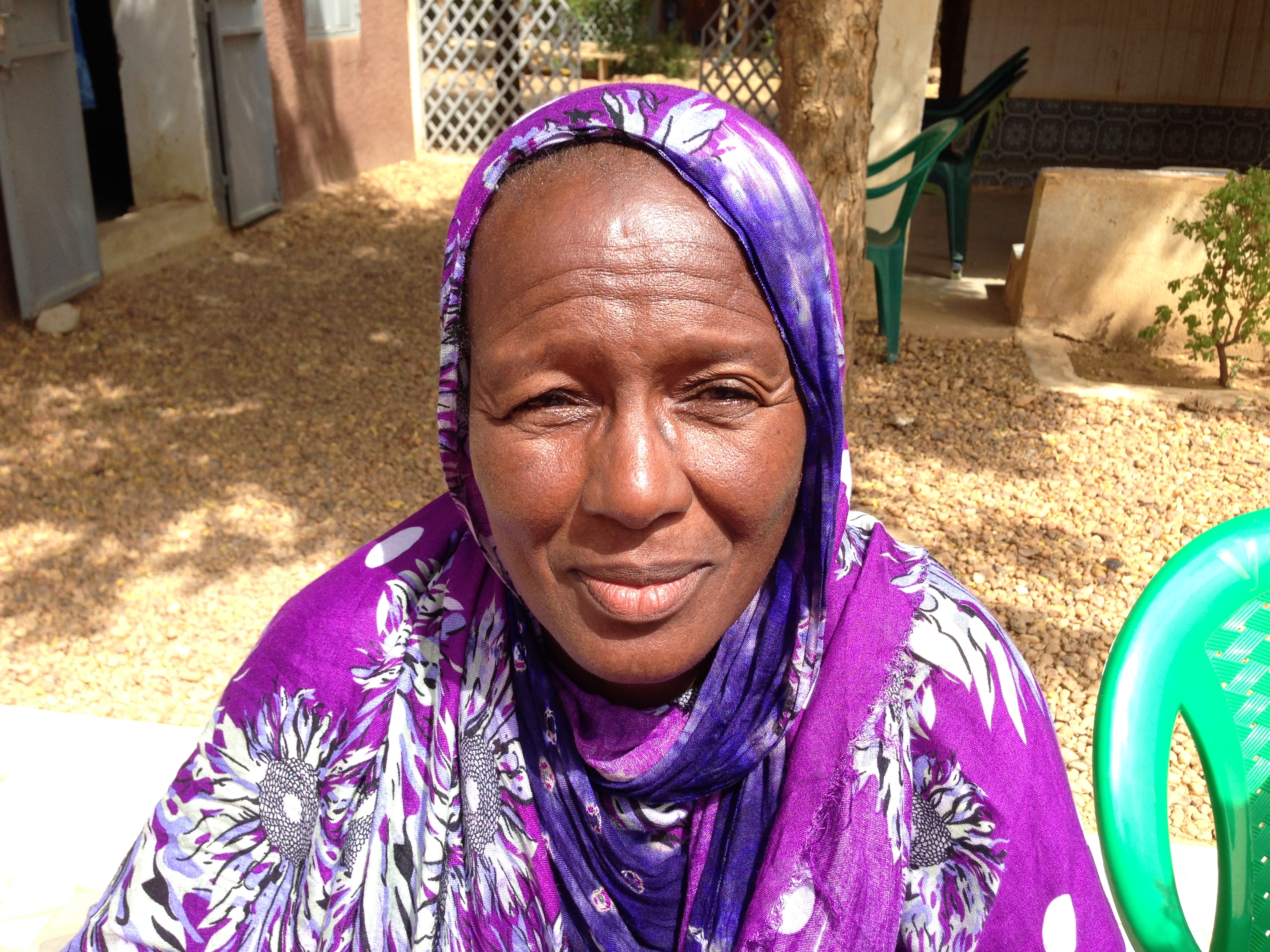
Mariam Sidda Maiga lived through the occupation in the north by jihadists in 2012. Many women resisted by going about their normal lives.
The other feature of this crisis was economic. Many of the 2012 survivors have remained in a state of extreme poverty, having lost their husbands, their belongings and their land. This was worsened by the destruction of state services during the 2012 occupation and subsequent threats against government workers. Many schools remain shut in the north because teachers have been threatened or fled. Even the climate turned hostile. According to the UN, over two million Malians in the north face a food shortage, worsened by drought and war.
The situation of displaced women in Bamako was little better. Throughout the program, IDPs continued to move between communes in search of work, only to find that they lacked a support system after leaving familiar surroundings. This left them deeply vulnerable to SGBV in Bamako itself. Sini Sanuman animators reported a series of sexual attacks on girls between 2014 and 2017, some as young as six months.
Given the magnitude of this crisis, any response had to address the economic crisis as well as the psychological and medical needs of survivors. The goal was not recovery – no one recovers from rape – so much as helping survivors to regain their confidence and re-enter society. For this, they must earn a living and learn a skill.
There was much to work with because the women of Mali showed great courage during and since the occupation. Mariam Sidda Maiga, pictured below, worked as an embroidery trainer at the Bourem center and lived through the occupation in 2012. She said that many women had resisted the occupation by staying indoors rather than wear a burka. Resistance in such a context could also mean caring for family-members after an attack, organizing family members to move hundreds of miles to Bamako, moving into a temporary shelter with strangers, or seeking a job to make ends meet.
This gave reason for hope. The women profiled on these pages are an inspiration to us all.
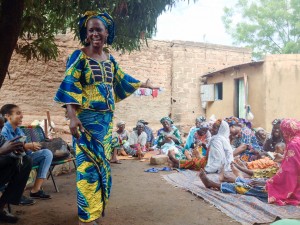
Animators like Mariam Seck help vulnerable women in Bamako, Gao, and Bourem to reduce their exposure to GBV.
This campaign built on years of advocacy on behalf of Malian women by Sini Sanuman (“Healthy Tomorrow”). Sini Sanuman’s earlier work on excision put the organization in a strong position to respond to the mass rape in northern Mali in 2012 and the organization referred over 200 women for medical treatment, with funding from UNICEF.
Animation
The campaign’s first goal was to reach vulnerable women. Thirteen “animators” in the capital Bamako and the northern town of Bourem organized meetings through local associations and explained how women could reduce their exposure to sexual and gender-based violence (GBV), as explained on this page.
The animators also identified survivors of sexual violence who would benefit from Sini Sanuman’s emergency support and training. Sini Sanuman recorded attendance and found that 142,594 women and girls attended animations sessions between 2014 and 2017. Even though many attended multiple sessions it is safe to say that over 40,000 individuals benefitted.
Emergency Support for Women
Instead of referring women to hospitals, as happened in 2012, the campaign offered its own services designed to address the physical and emotional needs of survivors at three centers in Bamako and the town of Bourem in northeast Mali. The first two centers opened in June 2014. In January 2017 the campaign opened a third center in the sixth commune of Bamako, which is the point of entry for all displaced persons arriving from the north. A fourth center opened in the northern town of Gao, in July 2017.
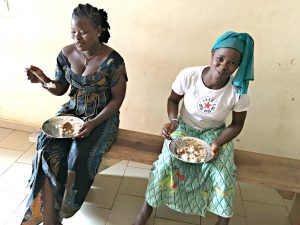
With malnutrition rising in Mali, food is an important part of Sini Sanuman’s emergency services for survivors
The first two centers took in 60 women in 2014 and 240 in 2015. The number fell to 120 in 2016 because the period of training was extended to six months. The women travelled to the centers at their own expense and returned home at the end of each day. One Bamako center provided five beds for women who endured a particularly long commute or could not bear to be leftalone.
Many of these women were in need of care and the campaign hired psychologists to screen the women on their arrival and departure at centers. The centers also offer one cooked meal a day in Bamako. Beneficiaries in Bourem received two meals because they started much earlier in the day and crossed two rivers before reaching the center.
Rounding off the emergency services, the campaign covered the cost of treating infectious and contagious conditions. Sini Sanuman had hoped to add legal services – an important part of recovery – but decided to refer such cases to other NGOs with more legal expertise. Unfortunately, this became bogged down in Mali’s fragile legal system. Sini Sanuman helped several survivors to submit complaints and secured at least one conviction. But such successes depend very much on individual judges. For more on emergency support visit this page.
Sini Savon – Soap Training
The centers trained survivors to make soap, embroidery, and clothes. This was intended to provide the women with skills that would help them find work and restore their confidence. Soap was particularly appropriate because it is easy to make and widely sold at markets.
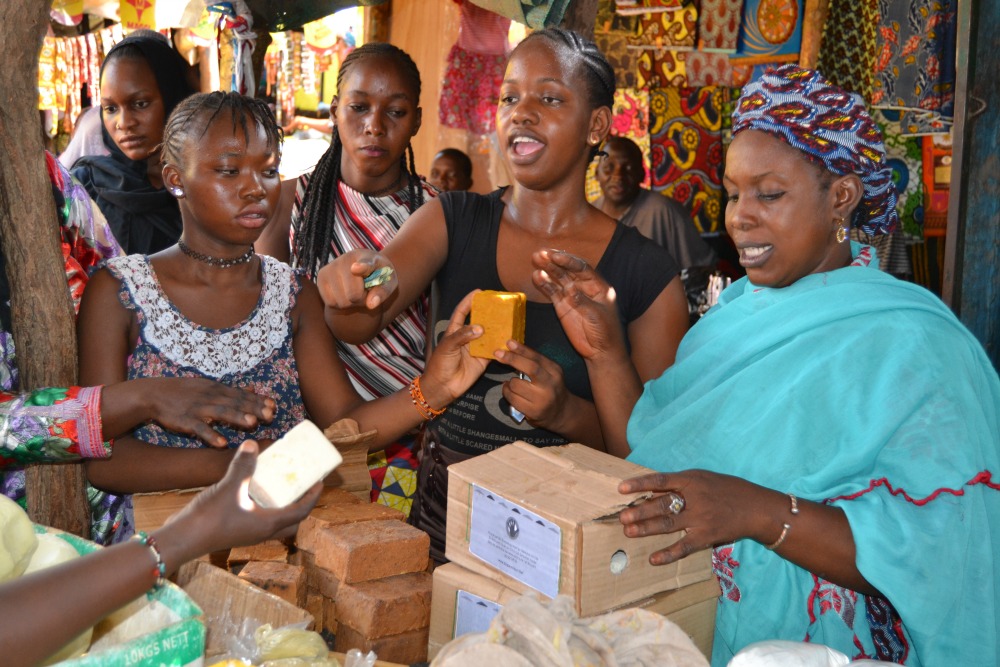
Fatimata and other trainees sell their soap at the local market. Selling their own soap brings in money and boosts confidence.
The campaign made two types of soap, from palm oil and from shea butter (beurre de kerite). By the end of 2014, trainees had produced 780 bars under the brand name of Sini Savon as well as 75 liters of all-purpose liquid soap.
In 2015 the campaign began purchasing shea butter oil from a cooperative of village women, (Ane Association), who can be seen making the oil in this video. The oil was then taken to the Bamamo center where it was used to make shea butter soap as shown in this video. Once hardened, the soap was rounded by hand, packed into cartons, and sold at markets. Between 2014 ad 2017 the production of soap rose from 780 bars to 34,576 bars. The income from soap in 2017 allowed $5,835 to be shared among the 210 beneficiaries and a similar amount reinvested into the Sini Savon business.
The first training was seen as a form of emergency support for survivors, who each received an “investment grant” of 10,000 CFA when their training ended. But in May 2016 the campaign decided to put the soap project on a more professional footing and pay the trainees a serious wage. With help from Peace Fellow Rose Twagirumukiza, the trainers added new scents to the soap, purchased new molds, built a storage shed at the Bamako center and began keeping records.
The trainers also divided their trainees into teams and sent them off to markets with the promise that they would keep 60% of what they sold. AP accompanied one team to the local market in 2016 and witnessed some exuberant haggling, as described in this press release. By the end of 2016 sales had exceeded the target of 25,000 bars. Back in the US, AP sold several cartons of soap with help from students at George Washington University and launched two appeals on Global Giving that generated over $7,000 for Sini Savon.
By the end of 2017, as German support was coming to an end, Sini Sanuman and AP made plans to move the training back into the community as a way to help trainees contonuemake soap after they left the centers. In a test case, AP invested $1,000 in the Moussou Kalanso women’s soap cooperative on the understanding that the group with recruit former trainees. For more on the soap training visit this page.
Sini Couture – Training Tailors
Tailoring was included in training in 2014 because a tailor’s apprentice can earn a good living in Mali. As with soap, the first goal of training is to provide survivors with a supportive community and a marketable skill.
For those with motivation this approach proved to be extremely successful. Sirantou S was inspired by the training and received a large loan (500,000 CFA – $1,000) from her husband. She then formed a business (“Nieta”) to train apprentices and make clothes. By November 2016 Sirantou was training 30 young apprentices (mostly school drop-outs) and bringing in almost $4,000 a month.
Sirantou was the model beneficiary – a talented seamstress who thrived in the communal atmosphere of the Bamako center and went on to launch a successful business. She also shows that producing to a high quality, be it soap or clothing, can be both satisfying and therapeutic.
By November 2017, almost all trainees in Bamako had produced clothing for sale. They were able to take advantage of the Tabaski festival, which offers Malian women the chance to purchase a new outfit. Overall in 2017 trainees sold 180 items of clothing and produced many more items as gifts. As well as showing that traumatized GBV survivors with no prior experience of tailoring can produce quality clothing in just six months, the training left them with a sense of achievement and the confidence that comes from a job well done.
Producing school uniforms: In 2016, Sini Sanuman trainees began to produce school uniforms for students from poor families. The hope was that this would provide trainees with a clear production target while producing a social good for the community. The women produced 2,000 uniforms in 2016 and 2017.
AP visited several schools to evaluate the impact and identified three clear beneficiary groups – families, schools and students. Families were enthusiastic because they were saving the 6,000 CFA ($12) they would spend on a new uniform. Several teachers also described the benefits to their schools. For the principal at the Jardin d’Enfants in Gao, Sini Sanuman’s uniforms were a boost for morale at a time when education was under threat from extremist violence. The principal at the EF Djanguineougou school in Bamako said that the uniforms had improved discipline and removed differences of class and income. “If everyone wears a uniform you cannot tell the rich from the poor,” he said. “I myself wore a uniform when I was at school.”
The third group of beneficiaries were the students themselves, who were struggling to study in overcrowded classes. One teacher at the Sikoro School in Bamako, which received 100 uniforms in 2017, said that uniforms “gave poor students the courage to attend school and put them at ease.” It also lessened the temptation for students from richer families to dress extravagantly. This teacher was convinced that uniforms has helped to lift school grades.
By the end of 2017 it was clear that the uniform project was producing benefits for survivors and for the community alike. Working on a simple line of products allowed the trainees to learn the basics of tailoring in 6 months and produce clothing that could compete with the professional product – an important first step in learning a skill that could eventually bring an income. At the same time, the uniforms were also helping to improve discipline and lift education standards at schools in Bamako and ease some of the pressure on vulnerable families and mothers. For more on tailoring visit this page.
Sini brodage – Embroidery Training
Needlework is not as central to Malian culture as the production of cloth, but stitching can be deeply therapeutic for traumatized women as well as being a useful skill. In 2014, the campaign decided to offer embroidery training and recruited two experienced trainers – Massaran Traore and Mariam Sidda Maiga – to start the ball rolling with help from AP Peace Fellow Giorgia Nicatore. Mariam Maiga served as the trainer in Bourem and taught 15 basic stitches that she had learned from her mother. Things moved faster at the Bamako center, where Massaran Traore purchased large amounts of bright cloth and encouraged her students to use their creativity.
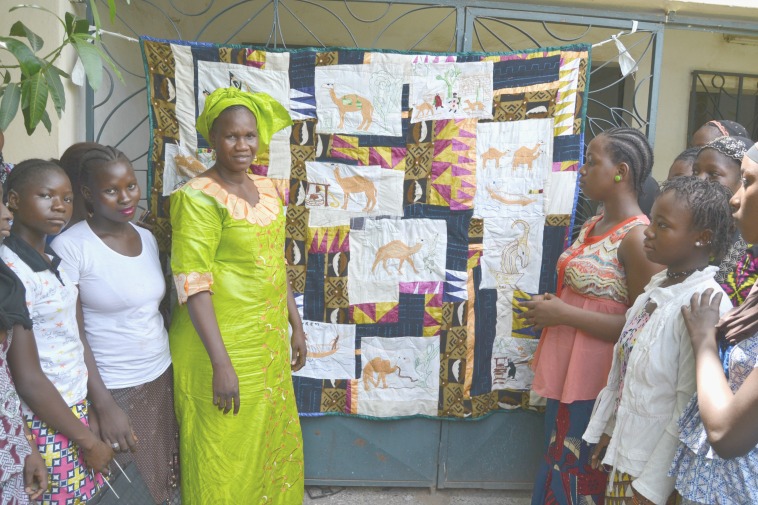
Made in Mali: Trainer Abi Konate with her trainees and their Camel Quilt.
Initially, both centers encountered problems with the design. Asked to “describe their lives” through embroidery the women did not know where to start. So the campaign asked two art students to help the women translate their ideas into designs. This produced some shocking images, and several artists wept as they explained their designs to visitors. Giorgia Nicatore brought the squares back to the US where they were assembled into two striking quilts by the PM Fiber Arts Guild in Bethesda described on this page.
By 2016 it was time to see if the trainees could produce embroidery for sale and the trainers began to instruct their pupils in the making of seat cushions, curtains, and tablecloths, all of which are sold at markets. The trainees also produced delightful designs featuring camels, which were brought back to the US for assembly into quilts.
AP took one quilt back to Mali, where it was enthusiastically received at the Bamako center. Helped by their trainers, Abi Konate and Massaran Traore, the trainees produced their own Camel Quilt, full of color and spontaneity (photo). Impressed, a Bamako hotel ordered its own Camel Quilt – the first-ever advocacy quilt to be produced and sold locally outside the United States.
The campaign hopes to build on this promising start in 2017. Trainees will produce 100 high-quality embroidered squares and turn the fifty best squares into quilts and wall hangings, while AP and Sini Sanuman will seek out markets in Mali and the US. Click here for more on the embroidery training.
Women at the Center of Development
Between 2014 and 2016 this campaign offered emergency support for women undergoing a personal crisis. Some may question the need, given that the 2012 crisis is receding and there are no reports of widespread sexual violence linked to the conflict. In response, we would say that the north remains deeply insecure. There is always a risk that extremism will return, bringing with it hatred and violence against women.
It is more important than ever to offer an alternative vision of Mali’s future – a vision that empowers and embraces women. This explains the decision to expand the campaign in the north and open a new center in Gao. The need is great because Gao has the largest undeclared number of rape survivors in Mali. Equally important, however, investing in women strengthens families and society. This campaign can show the way in one of Africa’s more troubled regions.
|
|
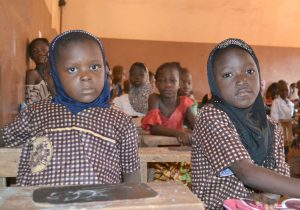
Aimaya and Doumou, proud owners of a school uniformAimya and her close friend Doumou are among 2,000 students from poor families who have received free school uniforms made by Sini Sanuman’s trainee tailors. Parents love the program because it saves them 6,000 francs ($12.00) per uniform. Teachers say that the uniforms improve school discipline because they reduce competition between students and may even lead to better grades. One thing is clear: the uniforms show that survivors can produce quality clothing after just six months of training. |
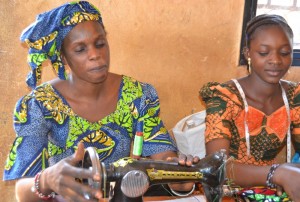
Sirantou, trainee and businesswomanSirantou is one of many community leaders who has benefited from Sini Sanuman’s program. After being trained in how to make clothes at the Bamako center in 2014 she started a business with a loan from her husband. By June 2016 Sirantou was training 30 young apprentices, many of them school dropouts. In 2016 she agreed to employ five recent trainees after Sini Sanuman agreed to cover the rent and purchase sewing machines. Helped by the subsidy, her profits soared in 2017.
|
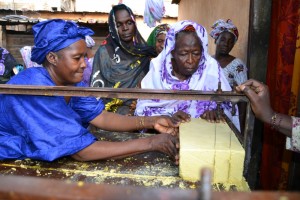
Djenaba, president of the women’s cooperativeDjenaba heads the Moussou Kalanso women’s cooperative in Bamako, a group of 39 women that helps Sini Sanuman to organize outreach sessions for vulnerable women. In 2017 the cooperative agreed to employ several past trainees in return for a subsidy of $600. This enabled Djenaba and her members to double their sales of soap (from $4,380 to over $10,000) and increase their own earnings dramatically. It was another example of Sini Sanuman’s ability to benefit the entire community. |
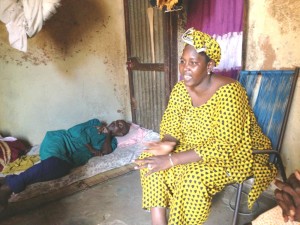
Famita and Mohammed, among 12,285 family membersFamita was living in Timbuktoo with her family in April 2012, when rebels arrived. After driving their car over her bother, they raped Famita and pistol-whipped her husband, Mohammed, reducing him to a cripple. Famita brought Mohammed and the rest of her family south to Bamako. Caring for Mohammed has severely strained her back and required medical care. Mohammed is one of 12,285 family members to indirectly benefit from Sini Sanuman between 2014 and 2017.
|
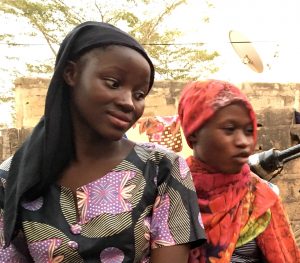
Bintou, one of 40,000 who attended animationsBintou, left, is one of around 40,000 women who attended animation (outreach) sessions by Sini Sanuman between 2014 and 2017. Bintou, 17, needed advice urgently because she had been offered by her uncle for marriage to a much older man and had written to the local mayor in protest. The mayor referred her to Sini Sanuman and in November 2017 Bintou sought help from Mariam Seck, manager of the Bamako centers, at an animation. Mariam drew on her community contacts and appealed on Bintou’s behalf to the local leader.
|
Lala, trainer and Malian team member
|
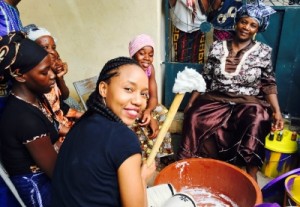
Rose, one of 3 Peace FellowsRose Twagirumukiza was one of three AP Peace Fellows who worked at Sini Sanuman between 2014 and 2017. Rose’s own story is compelling. A survivor of the Rwandan genocide, she spent nine years as a refugee before being granted asylum in the US. She received American citizenship a week before leaving for Mali, where – in her own words – she wanted to repay the generosity of those who had helped her. She played a key role in improving the quality of Sini Sanuman’s soap (Sini Savon) and making the soap project more transparent. |
Sini Sanuman’s (Healthy Tomorrow) has grown since taking on the challenge of armed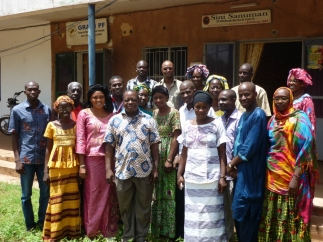 sexual violence in 2012. Eighteen staff members work in the capital, Bamako, and are pictured right. Ten staff work at the center in Bourem. The turn over of staff has been very small, testifying to their dedication and experience.
sexual violence in 2012. Eighteen staff members work in the capital, Bamako, and are pictured right. Ten staff work at the center in Bourem. The turn over of staff has been very small, testifying to their dedication and experience.
The program has been backed up by AP in Mali and the US. Peace Fellows, Giorgia Nicatore (2014) and Refilwe Moahi (2015) have served at Sini Sanuman. Iain Guest from AP has made several visits to advise, help with drafting reports and proposals, and produce web content. AP staff are pictured below.
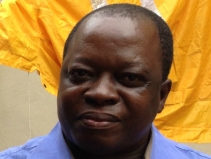
Siaka Traore, President (Bamako) |
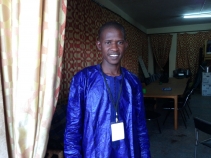
Alpha Boubeye, Coordinator (Bamako and Bourem) |
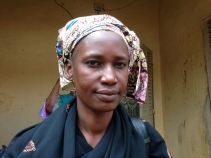
Mariam Seck, Coordinator of Outreach (Bamako) |
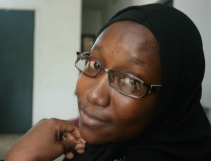
Awa Sangare, Program Assistant (Bamako) |
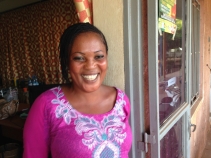
Sitan Konate, Finances (Bamako) |
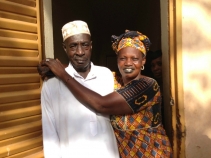
Mohamed Sylla, Psychologist & Center Director (Bamako) |
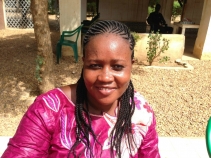
Fatoumata Diabate, Center Director (Bourem) |
Left: Assetou Toure, Animator (Bamako) with Valentin Wasilew |
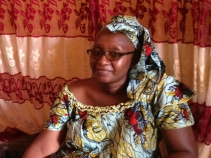
Animata Sissoko, Animator (Bamako) |
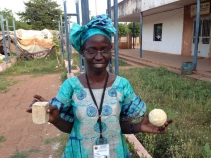
Zaliha Maiga, Animator (Bourem) |
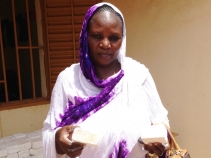
Aissata Toure, Soap Trainer (Bamako) |
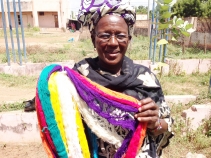
Mariam Sidda Maigo, Embroidery Trainer (Bourem) |
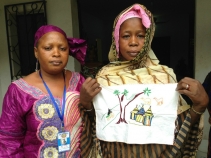
Left: Massaran Traore, Embroidery Trainer (Bamako) |
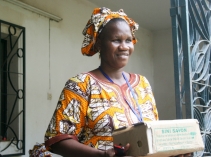
Abi Konate, Clothes-Making Trainer (Bamako) |
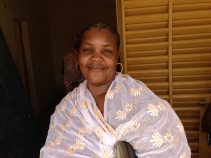
Djeneba Samake, Cook (Bamako) |
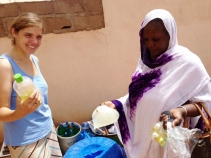
Left: Giorgia Nicatore, 2014 Peace Fellow with Aissata Toure |
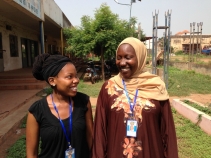
Left: Refilwe Moahi, 2015 Peace Fellow with Awa Sangare |
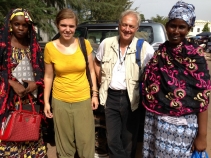
Giorgia Nicatore and Iain Guest with Trainers |
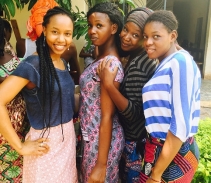
Left: Rose Twagirumukiza, 2016 Peace Fellow, with Beneficiaries |
 |
 |
|
| Institut für Auslandsbeziehungen / Zivik Funding Programme | The Federal Foreign Office of Germany | The Ministry for Foreign Affairs, Justice and Culture of Liechtenstein |
Taylor Adams, Jaime Alvarez, Christopher Anzivino, Barbara Ayotte, Mathilde Barbosa, Frederick Bartlett, Seble Beranu, Alexsndra Bezeredi, Kate Bisbee, Kate Bollinger, Margaret Brennan, Cathy Calhoun, Marisa Campbell, Hannah Chi, Mary Clark, Paul Critser, Elizabeth Cullen, Paola Di Stefano, Meagan Donahue, Anne Dronnier, Lorenzo Dutto, Elizabeth Eng, Sarah Farhat, Sherri Gajewksi, Barbara Geiser, Didier Godat, Devin Greenleaf, Thierry Groell, Iain Guest, Shannon Holland, Rachael Hughen, Maria Rosaria Iorio, Soren Jespersen, Lucyna Jodlowska, Lisa Johnson, Cheryl & Mark Kaplan, Megan Kelly, Sheila Kelly, Judith Khan, Adam Knight, Joanne Koch, Marianne Krey-Jacobsen, Peter Kristensen, Sumir Lal, Annapina Laraia, Judith Leff, Rita Lo, Merry May, Lynn Misiak, Claudia Mordini, Luniya Msuku, Nada Mufarrij, Joseph Orr, Karin Orr, Tindaro Paganini, Laura Palma, Stuart Rick, Jeff Robinson, Paolo Rondelli, Gian Paolo Ruggiero, Andrew Rushing, Madison Salters, Sarosh Sattar, Kay Scanlan, Héma Sibi, David Silver, Vivek Srivastava, Sebastian Stolorz, Dr. Richard Tanenbaum, Jonathan Ustun, Sila Cameselle Vila, Fanny Weiner, Rebecca Wolfe, Cara Young, Yongmei Zhou, and Breet Ziegler
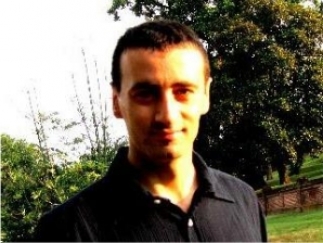 |
Luigi Laraia, an advisor to the Italian Executive Director at the World Bank, climbed Mount Denali in Alaska and dedicated his climb to the soap-makers. Luigi’s appeal on Global Giving has raised almost $7,000. The money will be used to cover the cost of soap materials at the Bamako and Bourem centers and rent a workshop where the soap-makers of the Moussou Kalanso women’s group can make soap every week. |
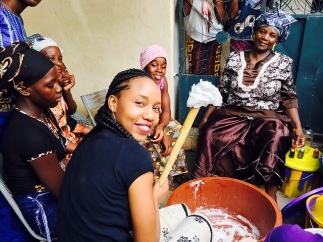 |
Rose Twagirumukiza served as the 2016 Peace Fellow at Sini Sanuman. Her Global Giving appeal raised $930 for the soap project. |
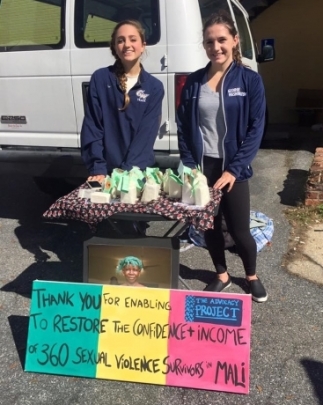 |
Rachel Hughen (left), a former AP intern, teamed up with her colleagues from the running team at George Washington University to sell Sini Savon shea butter soap at the Georgetown Fair in Washington, DC. |
Communities and Companionship Boost Rape Survivors in Mali July 24, 2018
Ten Amazing Malian Women! April 9, 2018
Rape Survivors Struggle as Women Again Bear the Brunt of Conflict in Mali November 22, 2017
Malian Rape Survivors Defy Terror and Invest for the Future July 25, 2017
Haggling for Soap Restores Confidence of Rape Survivors in Mali October 21, 2016
Genocide Survivor To “Give Back” as a Peace Fellow in Mali June 8, 2016
World Bank Mountaineer Raises Funds for Rape Survivors in Mali June 2, 2016
Soap Speeds the Recovery of War Rape Survivors in Mali December 7, 2015
Survivors of War Rape in Mali Find Solace in Soap and Sewing November 15, 2014
Survivors of War Rape Struggle to Survive in Mali’s Capital September 9, 2013
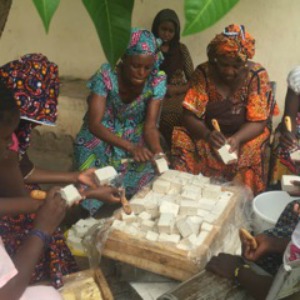 |
Rose Twagirumukiza’s Blog (2016)“This year, Sini Sanuman has started a new soap project which would provide the victims with an income during their time of recovery at the Sini Sanuman center. This new program allows the victims to sell the soap that they make at the local markets and keep up to 45% of their sales. Our hope is that this will allow the women to earn an income, and also contribute to their reintegration into society.” |
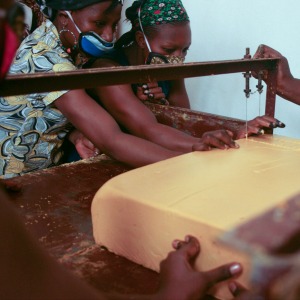 |
Refilwe Moahi’s Blog (2015)“While speaking about what she has been through brought back sad memories, her face brightened up when we asked to see some of her embroideries. She wants to put this, and other income-generating skills she has learned at the center to use to care for her family.” |
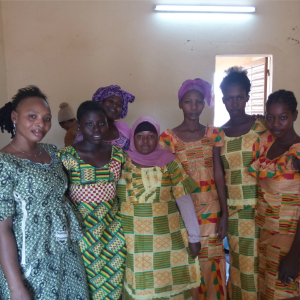 |
Giorgia Nicatore’s Blog (2014)“I feel that this project, that I am fortunate to be part of, has the potential to have a real impact, and indeed already has it. This is one of the photos that made it all worth it: survivors of sexual violence, strong women at our center, wearing the clothes that they learned to make, and being proud of showing them off.” |
These quilts were born out of the devastating war that swept the north of Mali in 2012. In 2013, AP developed a quilt-making program with our Malian partner, Sini Sanuman, to support survivors of sexual violence from the war.
